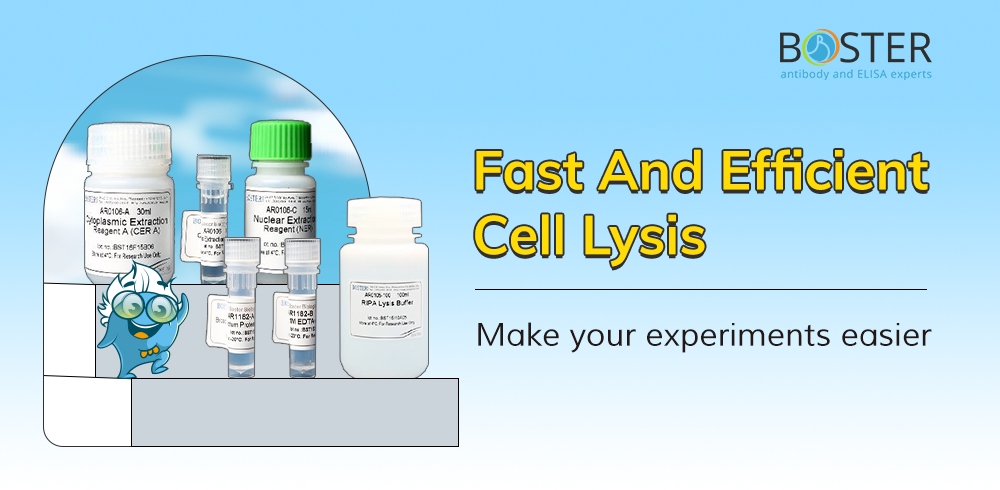This website uses cookies to ensure you get the best experience on our website.
- Table of Contents

Cell lysis refers to the process of breaking down the cell membrane through physical, chemical, or enzymatic methods, allowing the release of intracellular components such as proteins, nucleic acids, and small molecules. Cell lysis is crucial in molecular biology and biochemistry, especially when extracting and analyzing intracellular target molecules.
To extract proteins from different cellular locations, different types of cell lysis buffers are required due to the distinct structures and compositions of various cellular regions. Different lysis buffer formulations can selectively lyse specific cellular structures, thereby releasing proteins from the target locations.
For example, the Enhanced RIPA Lysis Buffers have advantage ranges in the following areas:
| Location of Protein | Lysis Buffer Recommended |
|---|---|
| Whole Cell | NP40、RIPA |
| Cytoplasmic | Cytoplasmic and Nuclear Protein Extraction Kit |
| Membrane bound | NP40/RIPA |
| Nuclear | Cytoplasmic and Nuclear Protein Extraction Kit |
| Mitochondria | RIPA |
| Golgi Apparatus | Enhanced RIPA |
(use RIPA as an example)
Note: Pre-chill an appropriate volume of RIPA Lysis Buffer at 4°C. If desired, add protease inhibitor and phosphatase inhibitor to the lysis buffer immediately before use.
Note: RIPA lysis buffer can be added directly to the flask containing cells. Please see the following procedures.
1. Carefully remove the culture medium from adherent cells.
2. Wash cells with chilled PBS. Carefully remove PBS.
3. Add chilled RIPA lysis buffer to the cells. Vortex briefly. Incubate on ice for 30 minutes. (For the volume of the lysis buffer, follow the instructions listed below)
| SIZE of the plate/surface area | Volume of the lysis buffer |
|---|---|
| 100mm | 500-1000μL |
| 60mm | 250-500μL |
| 6-well plate | 200-400μL per well |
| 24-well plate | 100-200μL per well |
| 96-well plate | 50-100μL per well |
4. Centrifuge samples at 14000xg for 10 minutes.
5. Transfer the supernatant to a new tube for further analysis.
Cell lysis is an essential process in molecular biology, facilitating the release of intracellular components for analysis. Various methods, including mechanical, chemical, and enzymatic approaches, are used depending on the experimental needs. Chemical lysis buffers, containing detergents, buffers, salts, chelating agents, and inhibitors, play a crucial role in stabilizing proteins during lysis. Enhanced lysis buffers, with fortified compositions, are particularly effective for challenging samples, such as membrane proteins or complex tissues. Selecting the appropriate lysis method and buffer ensures efficient protein extraction while preserving the natural structure and function of the target molecules.